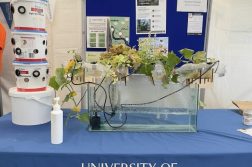Now that lockdown is being lifted in many countries, researchers are racing against the clock to avoid an expected second wave of infections. Genomic sequencing is the key to understand how to prevent the resurgence of coronavirus contagions.
The whole-genome sequence of SARS-CoV-2, otherwise known as the Novel Coronavirus, was made available on January 11th. Since then, scientists around the world have sequenced and shared over 32,000 viral genomes. This joint effort has enabled researchers to locate the geographical areas of the first upsurges and to determine when transmission inside specific countries occurred.
The risk of a second outbreak stems from the ease of social distancing and travelling restrictions. Countries that have decreased the number of infections are launching into a new phase of the coronavirus pandemic. As limitations give way to a more relaxed approach, scientists believe it is fundamental to trace and suppress new outbreaks. Microbiological studies have underlined how genomic sequencing can lead to briefer and less potent flare-ups, if the technology is used in contact tracing. Gytis Dudas, a consulting bioinformatician at the Gothenburg Global Biodiversity Centre in Sweden, affirms genomics can direct precise interventions when the number of cases is small. Their findings underline how distinct lineages of the virus were circulating and how they developed when they reached different areas around the world. This can then allow scientists to compare sequences and identify lines of transmissions, depending on whether the genetic material of the SARS-CoV-2 strains matches or not.
Countries such as the United Kingdom and the United States are trying to apply this knowledge to sequence SARS-CoV-2 from their large number of cases. As upsurges continue to affect the population, genomics is used to monitor and identify the sources of the outbreaks when contact tracing falls short. The biggest drawback of this method is its dependence on broad sampling, which can create gaps in the genetic data in areas where diagnostic tests are limited.
One example of how genomic sequencing is successful in keeping the number of cases small are New Zealand and Australia. Researchers there proposed to sequence the highest number of coronavirus genomes earlier than other countries, allowing the health system to be on top of tracing and management of the outbreaks. Scientists at the Peter Doherty Institute for Infection and Immunity in Melbourne had already started preparing to sequence SARS-CoV-2 in the state of Victoria before the virus had even reached Australia. Torsten Seemann, a bioinformatician based at the Microbiological Diagnostic Unit Public Health Laboratory in the Peter Doherty Institute, emphasises the need of identifying the sequence of each new positive case.
Seemann’s team has already sequenced the genetic material from 1300 cases, three-quarters of the total number. During the West Africa Ebola disease of 2014-2016, only 5% of the overall infected cases was scrutinised in a period of just under 3 years. For this reason, scientists recognise Seemann’s work to be the most complete sequencing coverage for an infectious disease. Thanks to Seemann’s team’s efforts, scientists could understand if health-care workers got infected at the hospital or through social events. Sequencing SARS-CoV-2 from infected individuals, it was possible to determine the outbreak did not start from the hospital because of patient-carer interactions.
As Australia is preparing to open the borders for all its states, the government expects an increase in the number of cases. Genomic information will be fundamental to pinpoint the origin of new infections. Because of the mutations the virus has gone through during lockdown, Seemann’s team can identify if a new case is imported or endemic. These studies on the genetic material will allow health officials to make informed decisions when the rate of infection increases again. Governments will be able to react to outbreaks quicker if compared to the first wave.
In New Zealand, Joep de Ligt, lead bioinformatician at New Zealand’s Institute of Environmental Science and Research near Wellington, is planning to sequence at least 70% of the total cases. His team has already sequenced 25% of the reported cases, but they can already identify where the next case fits in the virus’s evolution. These data have highlighted links between cases that contact tracing did not point out. De Ligt’s team has separated two local strains of virus, while other scientists thought them to be a single one. Even though it has given excellent results, asymptomatic infections are a limit to this approach, because they are less likely to get tested. This would prevent a truthful assessment of future flare-ups.
The COVID-19 Genomics UK Consortium, formed in March in the UK, has sequenced 20,000 viral genomes. Nick Loman, a bioinformatician at the University of Birmingham, confirms this sample only represents 10% of the confirmed cases in the country. Loman, one developer of the genomic-surveillance tools for Ebola, is now utilising those same tools to work on the COVID-19 sequencing. Although the team has not set a goal like New Zealand, they intend to produce a representative sample from the 265,000 confirmed cases, with the purpose of supporting further epidemiological investigations. As cases flooded the UK’s health system in a brief time, diagnostic testing was slow. However, for genomic surveillance to work, it needs widespread diagnosis to have a pool of sequences.
Now that cases are decreasing by the day and borders with other countries are opening, Loman affirms genomic surveillance will be of the utmost importance. Meru Sheel, an epidemiologist at the Australian National University in Canberra, warns that only high-income countries will access genomic analysis for contact tracing. In her opinion, this technology would be optimal if extended to countries with limited resources, such as those in the Asia-Pacific region. She cites how effective it was to share this technology with the Democratic Republic of the Congo, Sierra Leone and Guinea during the Ebola outbreak. The current pandemic has thus highlighted the importance of a joint tactic to prevent and fight off diseases like COVID-19.



